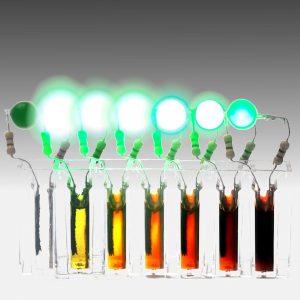H. Gao, A. R. Sevilla, G. M. Hobold, A. M. Melemed, R. Guo, S. C. Jones, and B. M. Gallant
Proceedings of the National Academy of Sciences, 2022, 119, e2121440119
★ Featured in MIT News and Popular Science
[Publisher Link]
Abstract
Discovery of new electrochemical redox motifs is essential to expand the design landscape for energy-dense batteries. We report a family of fluorinated reactants based on pentafluorosulfanyl arenes (R-Ph-SF5) that allow for high electron-transfer numbers (up to 8-e−/reactant) by exploiting multiple coupled redox processes, including extensive S–F bond breaking, yielding capacities of 861 mAh·greactant−1 and voltages up to ∼2.9 V when used as catholytes in primary Li cells. At a cell level, gravimetric energies of 1,085 Wh·kg−1 are attained at 5 W·kg−1 and moderate temperatures of 50 °C, with 853 Wh·kg−1 delivered at >100 W·kg−1, exceeding all leading primary batteries based on electrode + electrolyte (substack) mass. Voltage compatibility of R-Ph-SF5 reactants and carbon monofluoride (CFx) conversion cathodes further enabled investigation of a hybrid battery containing both fluorinated catholyte and cathode. The hybrid cells reach extraordinarily high cell active mass loading (∼80%) and energy (1,195 Wh·kg−1), allowing for significant boosting of substack gravimetric energy of Li−CFx cells by at least 20% while exhibiting good shelf life and safety characteristics.


Recent Comments